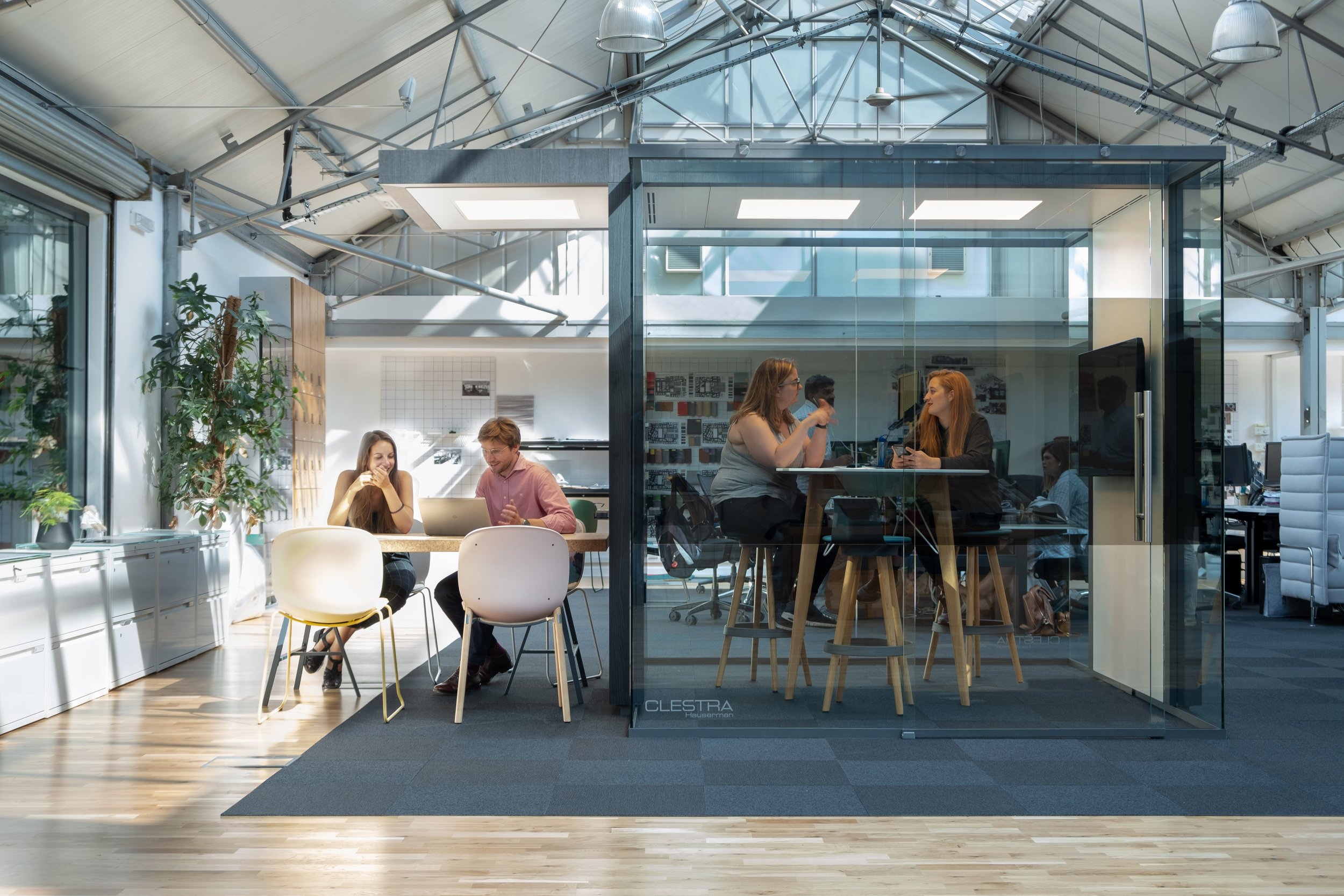How to improve employee wellbeing through workplace design
We spend almost a third of our lives at work, so a healthy working environment is crucial for our wellbeing. Employee health is now top of the agenda when designing a new office. A quality workplace design helps employees feel less stressed and more able to focus in a productive atmosphere. Providing a calm and comfortable environment helps everyone do their best work.
Here are some of the benefits of a workplace designed around wellbeing:
Fewer sick days
Attract and retain employees
Reduced stress and better focus
Better engagement and performance
Improved productivity
Let’s take an in depth look to see how you can create a healthier workspace:
Give workers more control over their environment
Create a distraction free, comfortable environment by giving employees control over their surroundings. Having the tools to create your own optimal workspace reduces stress. It creates a more ergonomic setting improving concentration and focus. Ways to do this are:
A height adjustable desk. This is ideal for employee comfort and ergonomics. The user can set the desk at the most comfortable height for their body size.
An adjustable, ergonomic chair. It should be possible to adjust the seat height and angle to suit any body type.
Flexible task lighting so that the user can adjust brightness and angle of light. Some desks incorporate task lighting
Hot Desking options with varied spaces around the office for individuals and groups. This gives employees the freedom to choose the optimal environment for the type of work they’re doing. Desk booking software can help with this.
Encourage posture change and movement
Changing between sitting and standing during the day adjusts the load on the body. It gives specific body parts a chance to rest. Standing improves blood flow to relieve tired muscles and helps the body achieve a loading balance. Changing from sitting to standing is good for your health. It makes your body work against gravity and keeps those skeletal muscles strong. Standing also helps regulate blood pressure. Ways to promote this include:
Give employees the option to move to different areas of the office dependent on their task. Provide quiet spaces for tasks that require focus
Allow workers to take breaks where they can stand up and walk around
Provide workers with sit stand desks allowing them to stand for some of the working day
What is ergonomic design?
Ergonomic products are designed around the user to support health, wellbeing and productivity. An ergonomic workstation will be flexible to accommodate different body sizes and postures. A good ergonomic setup is key to comfortable and safe working.
How to create an ergonomic workstation
A non ergonomic office setup leads to numerous physical health issues. Overuse and stress on the wrists and hands can cause Repetitive strain injuries. Bad posture causes musculoskeletal disorders such as chronic back and shoulder pain. Unhealthy equipment positioning can cause fatigue and discomfort that also reduces productivity. Here are some recommendations for a good ergonomic setup:
Your chair
An ergonomic chair helps prevent neck and lower back pain. Having an office chair you can adjust to support the spine leads to a healthier posture. This will help with concentration and productivity. An ergonomic chair adjusts to fit any body size and shape. It supports you in a variety of healthy sitting positions. Buying the correct chair is essential when setting up an office.
Your monitor
A quality monitor arm has the flexibility to adjust your screen to align it with your eye level for ergonomic viewing. If you’re straining your eyes to see the screen, you’ll begin to develop neck pain. A monitor arm will help prevent this. It will also allow you to raise your monitor to the perfect position for working and free up some space on your desk.
Your desk
A sit stand desk allows you to stand comfortably whilst working. It's height adjustable so you can switch between sitting and standing. Research shows that a sit-stand desk has impressive health benefits. These include lowering the risk of heart disease, reducing back pain, decreasing fatigue and improving mood.
Bring more natural light into your workplace
Poor lighting conditions can cause an increase in fatigue, headaches and eye strain. Good lighting allows people to see and complete their tasks in a safe and comfortable manner. Light has a powerful impact on the mind and body, affecting energy, mood and productivity. Here are a few ways to implement good lighting around the office:
Maximise natural light with floor to ceiling windows and skylights
Install task lighting at workstations. Some desks incorporate this into their design
Plan office layout to minimise glare on monitors
Consider varying the light between different areas of the office. For example by having lower lighting in areas not used as workspace.
Introduce some homely and natural elements
Bringing elements of residential interior design into the office is a growing trend. Splashes of bold colour, attractive light fixtures, and plants are all finding their way into the modern office environment. Recreational lounge spaces are also becoming popular. Here colleagues can relax and eat lunch together.
Office layouts are also changing. Both collaborative and solo, quiet spaces boost productivity. They allow for both coworking and focused concentration. Natural elements like plants and green walls create a calm environment. Studies show they help reduce employee stress and anxiety. Different textures and natural materials such as wood and stone also feature in this trend.
Workplace design has great potential for improving employee satisfaction, wellbeing and productivity. Businesses have a responsibility to provide a comfortable and safe working environment. Overall this will lead to better organisational performance.
Looking to upgrade your office? Technology Desking has you covered with a great selection of ergonomic furniture and accessories. Take a look at our range here:







